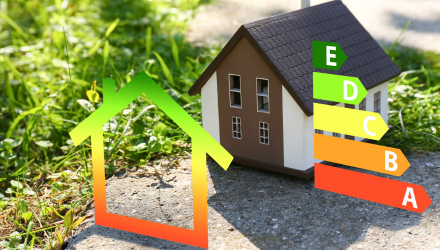By Maria Miranda on Fri 22 November 2024 in Blog
The New SAP: Future Homes Standard Assessment Explained

The shift from the Standard Assessment Procedure (SAS) to the Home Energy Model marks a significant change in assessing the energy performance of homes. This evolution is critical for landlords and housing developers as it aligns with the forthcoming Future Homes Standard, set for introduction in 2025.
What is the new standard assessment procedure (SAP)?
SAP, short for 'Standard Assessment Procedure,' is a methodology defined by the government to assess a home's energy efficiency. It was initially implemented in 1992 and serves as a rating system that influences several standards, including Building Regulations, exemptions for Stamp Duty on zero-carbon homes, and Energy Performance Certificates (EPC). Since its inception, SAP has undergone several iterations, with the current version, SAP 10.2, being released in June 2022.
The SAP serves two primary functions:
- Ensuring that newly constructed homes comply with Part L of the Building Regulations, which outlines the energy performance requirements.
- Generating Energy Performance Certificates (EPCSs) for all residential properties
However, SAP’s outdated methodology struggles with modern building technologies and real-world energy predictions. As we move towards the Future Homes Standard, the SAP is being replaced by the Home Energy Model, a more comprehensive approach to evaluating energy efficiency in homes. This evolution reflects the growing emphasis on sustainable housing development.
The transition to the Home Energy Model
The Home Energy Model is currently undergoing consultation to refine its methodology before its projected rollout in 2025, ensuring it meets the new standard's objectives.
Key features of the Home Energy Model
The Home Energy Model (HEM) is a tool designed to help make homes more energy-efficient and comfortable. It looks at various factors that affect how much energy a home uses and how well it regulates temperature. A key focus is accurately measuring energy usage and how well a home retains heat or coolness. By doing this, the model aims to improve living conditions in homes significantly. One important aspect is closely examining ventilation systems. By evaluating how effectively these systems work, the model ensures that new and renovated homes not only save energy but also have healthier indoor air quality. This is crucial for the comfort and wellbeing of the people living there.
There are key differences between HEM and the SAP that include:
- Data requirements: HEM demands detailed information (bedrooms, appliance ratings, living space measurements, shading), ensuring accurate simulations. SAP uses a less detailed dataset.
- Accuracy: HEM uses half-hour intervals for realistic energy consumption and environmental impact assessments, unlike SAP's monthly calculations.
- Future-proofing: HEM evaluates future technologies like heat batteries, offering a comprehensive view of long-term energy efficiency.
Additionally, updates to the ecosystem are being undertaken, including:
- Transitioning to an open-source methodology to promote transparency and collaboration.
- Revising the delivery model and software provision to improve accessibility and user experience.
- Updating the database of product characteristics to reflect the latest advancements.
- Recognising and incorporating new technologies to maintain relevance.
- Utilising "wrappers" to clearly distinguish and separate different use cases, ensuring clarity and ease of use.
The new structure of the Home Energy Model project will bring about several advantages, including increased flexibility with the use of ‘wrappers’ allowing for independent updates and modifications without affecting the core model. Plus, greater clarity, accountability and opportunity for customisation.
What is the Future Homes Standard?
In 2025, the UK government will introduce the Future Homes Standard - a set of new building regulations mandating much higher energy efficiency standards for new residential construction projects.
This standard mandates that newly built homes will be future-proofed with low-carbon heating and world-leading levels of energy efficiency. The goal is to ensure that new homes produce at least 75% lower CO2 emissions compared to current standards. This ambitious step is part of the broader strategy to achieve net-zero emissions by 2050, aligning with the UK's climate commitments while promoting sustainable development and healthier living environments.
The Future Homes Standard ("FHS") consultation aims to gather feedback on proposed revisions to Part L, which are scheduled to take effect in 2025. A home's compliance with these regulations will be evaluated using the government's new Home Energy Model: FHS assessment, which will supersede the currently approved methodology, SAP 10.2. The Home Energy Model: FHS assessment will estimate the emissions and energy consumption of the dwelling under specific conditions and compare it to a benchmark notional dwelling.
Implications of the Home Energy Model
The introduction of the Home Energy Model is expected to drive significant changes in building assessments, directly impacting developers and landlords who will need to ensure their properties meet the new standards.
The combined changes of the Home Energy Model assessment and Future Homes Standard regulations will directly influence your housing development and property management practices going forward. Key implications include:
- Need to ensure future residential projects comply with the higher energy efficiency requirements.
- Potential design modifications and integration of innovative technologies.
- Greater emphasis on energy performance from the planning stages of construction. HEM requires close cooperation from the design’s inception.
- Pre-designed HEM-compliant plans to streamline processes and minimise post-design changes.
- Detailed data collection lengthens assessment time, meaning more experienced consultants for efficient processes.
Ventilation and energy efficiency
The Home Energy Model will help create new standards in ventilation and energy systems in new developments. Proper ventilation is a core focus area of both the Home Energy Model and the Future Homes Standard. As an expert in energy-efficient ventilation, Airflow offers solutions purpose-built for these new regulations:
- Mechanical Ventilation with Heat Recovery (MVHR) systems: recovers heat from outgoing stale air to pre-warm incoming fresh air, reducing heating costs while maintaining indoor air quality.
- Demand-controlled ventilation solutions: adjusts airflow based on occupancy and preventing unnecessary energy waste.
The importance of early adoption
Embracing the Future Homes Standard and Home Energy Model ahead of time is vital for safeguarding investments in the housing industry. Proactive implementation of these new guidelines not only ensures compliance but also positions developments at the forefront of the sustainability trend. Early adopters can capitalise on improved energy efficiency and reduced carbon emissions to appeal to environmentally conscious buyers and tenants, gaining a competitive advantage. Plus, early adoption eliminates the need for costly retrofitting in the future and aligns with long-term regulatory shifts towards environmental sustainability, securing investment attractiveness and stability in an evolving regulatory landscape focused on eco-friendly practices.
How Airflow can help
Understanding and preparing for the change from the SAP to the Home Energy Model is essential. Airflow has the trusted expertise to assist in navigating these new regulations. Get in touch with Airflow to find tailored solutions that comply with the upcoming standards. Airflow also offers selection software to help identify the most suitable products for your project. Take the first step towards Future Homes Standard compliance by contacting Airflow today.


